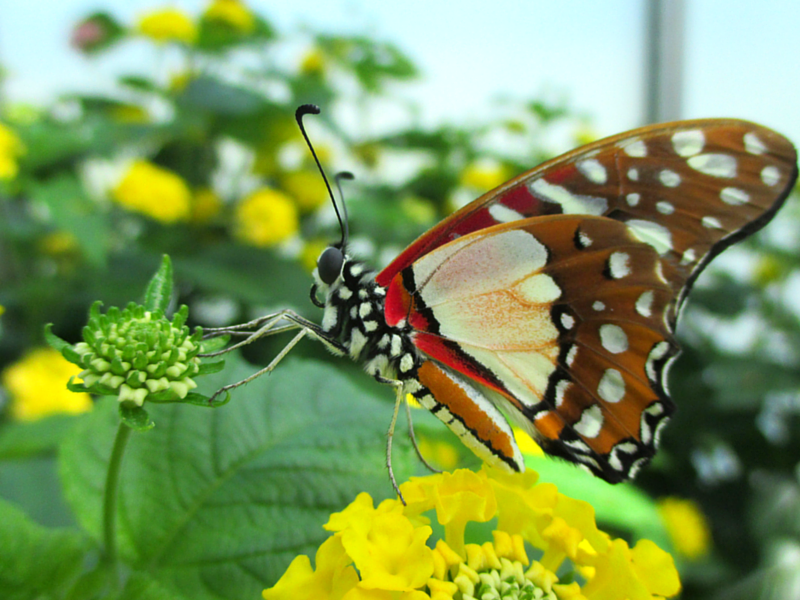Oct 5th, 2015
10 Favorite Butterfly Facts
We are lepidopterists (butterfly enthusiasts) at Butterflies LIVE! and we want to share some of our favorite facts about butterflies with you! Here are our top 10 favorite facts:
- Butterflies help our food grow. Butterflies are pollinators, just like bees, birds and bats! Pollinators are actually responsible for every 1 in 3 bites of our food. However, butterflies are generally considered passive pollinators.
- Some only live for a few weeks! The average lifespan for a butterfly is 2 to 4 weeks. Some smaller species only live a few days while others can live up to 9 months!
Bonus fact: Butterflies in the Heliconiinae subfamily have a specially adapted proboscis that allows them to ingest pollen, which prolongs their lifespan. - Butterflies have scales on their wings. Butterfly wings are actually transparent but are covered in thousands of tiny scales that make up their vibrant colors and patterns. You can learn more about butterfly wings and scales on our butterfly scales blog post.
- Each butterfly has a specific plant/s that they can lay their eggs on. This is called their host plant because it provides nourishment to the larva. Some butterflies are poisonous as a result from eating the sometimes toxic leaves of their host plants.
- They survive on a liquid diet. Butterflies use their proboscis, similar to a straw, to suck up nectar from flowers, salt from the floor, and juice from rotting fruits.
- Some species can actually hear. They have a specialized organ that acts like a ear, located a the base of their forewings. The “ear” is a small fluid-filled sac covered with a thin membrane that helps them distinguish frequencies, which causes the membrane to vibrate. Some species, like the common morpho (Morpho peleides), have exceptional hearing to detect predators trying to sneak up on them or to hear the click of your camera so they can close just in time to miss that great shot. Am I right?
Bonus fact: Some butterflies in the Hamadryas genus and Heliconiinae subfamily can make clicking sound. No wonder some of these butterflies are called crackers! - They like it hot! Sometimes humans think it’s too hot in the exhibit but the butterflies think it’s just right. In fact, they need their body temperatures to be at least 85 degrees in order for them to fly.
- Wings are used like solar panels. Butterflies are very adaptive, especially when they are not in their ideal temperature zone. One way they warm themselves up is sunning, which is when they use their wings like tiny solar panels to absorb the sun. Pretty smart!
- Butterflies taste with their feet! They have taste receptors located on the bottom of their feet rather than their mouth or proboscis. Females will go from plant to plant, tasting the leaves until she tastes the host plant where she will lay her eggs.
- Compound eyes. Have you ever looked through a kaleidoscope before? Well if you have, then you know that you see tons of the same images repeated in small shapes. This is similar to a compound eye and how butterflies see.
